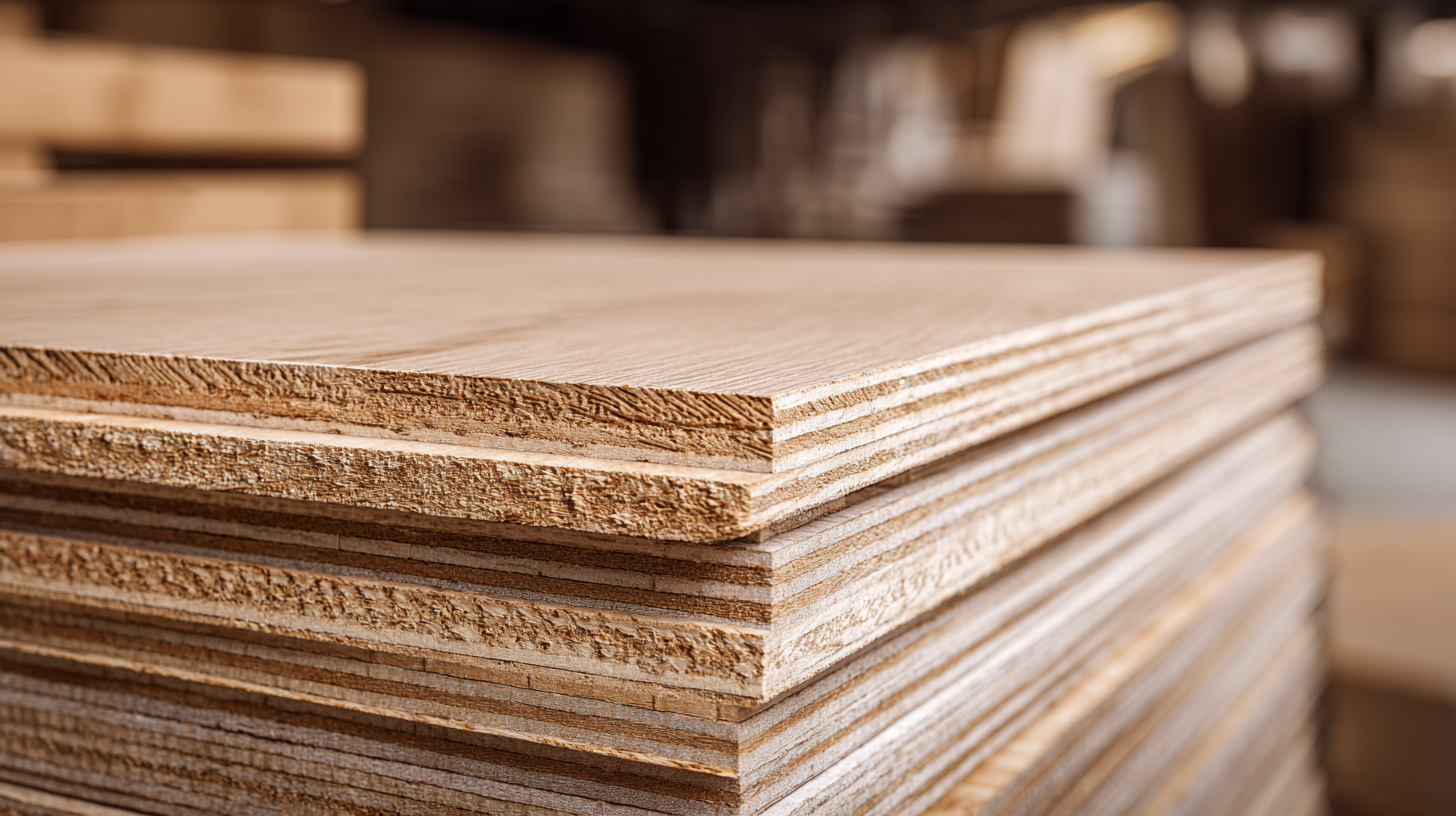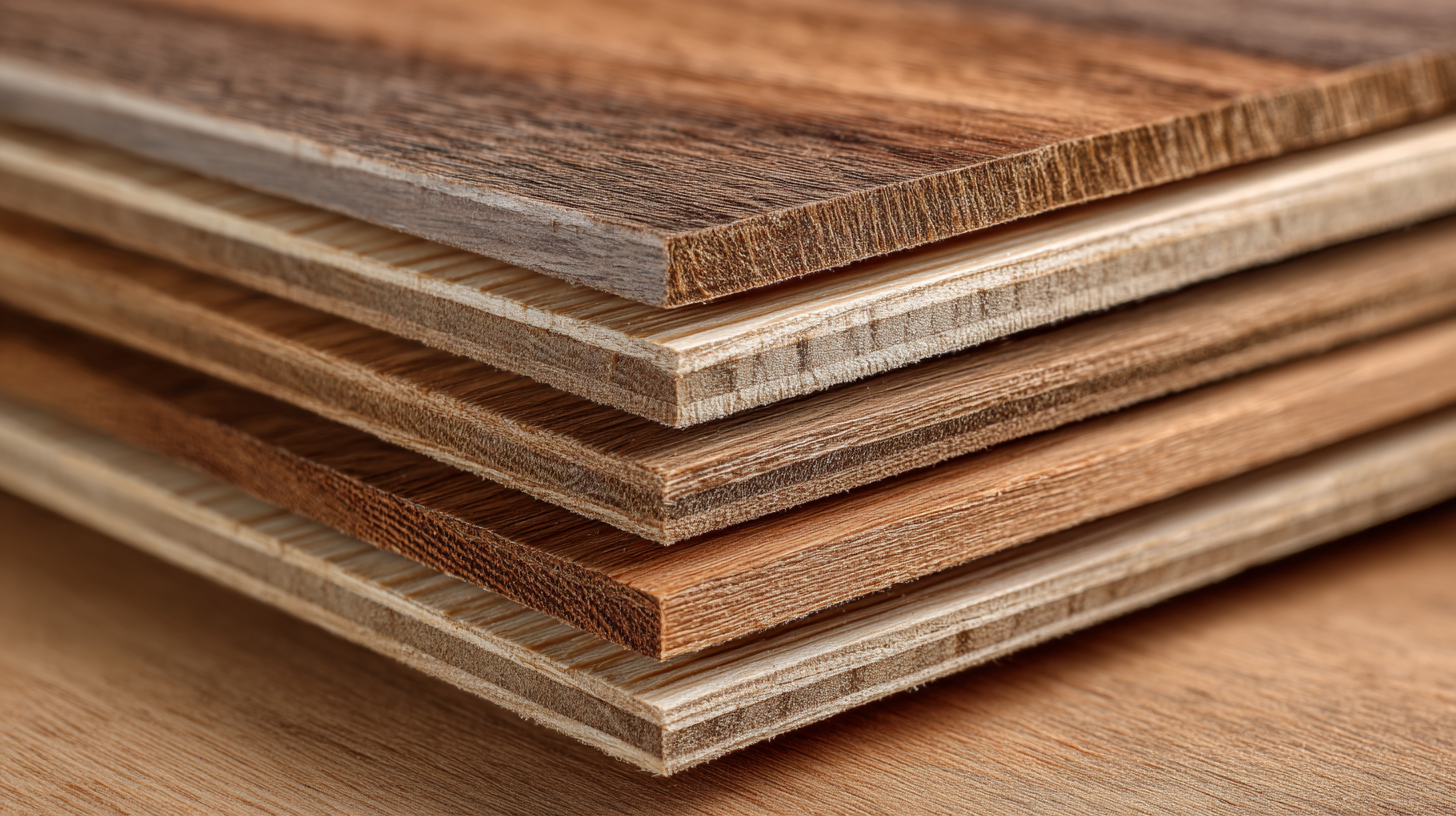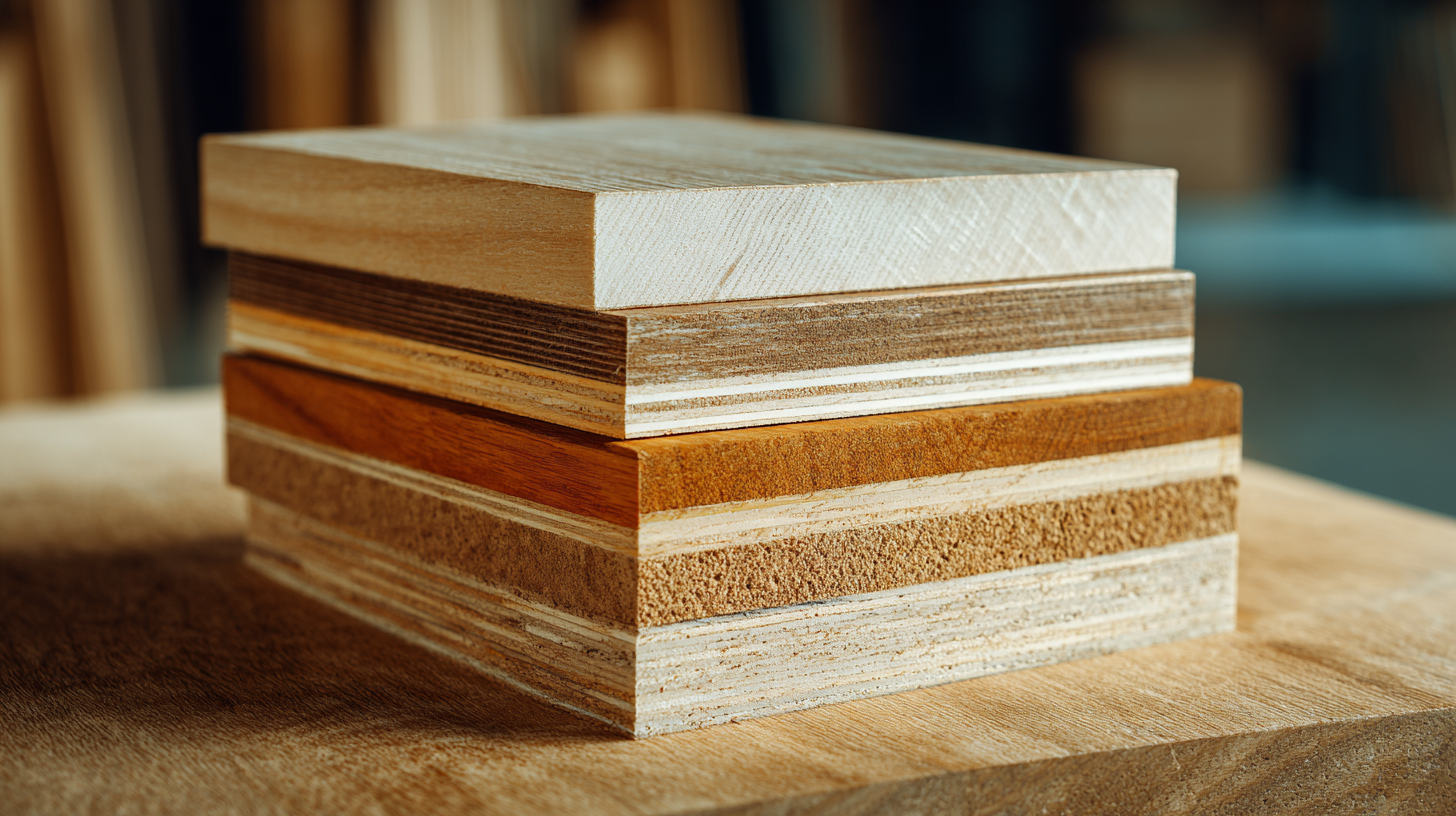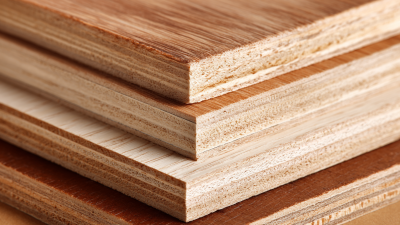 When embarking on construction projects, selecting the right materials is crucial to ensure durability and stability. One of the most versatile options in the industry is half inch plywood. According to the American Plywood Association, plywood accounts for over 30% of all wood panel production in the United States, with half inch plywood being particularly favored for a wide range of applications due to its balance of strength and weight.
When embarking on construction projects, selecting the right materials is crucial to ensure durability and stability. One of the most versatile options in the industry is half inch plywood. According to the American Plywood Association, plywood accounts for over 30% of all wood panel production in the United States, with half inch plywood being particularly favored for a wide range of applications due to its balance of strength and weight.
While many builders and DIY enthusiasts recognize the importance of choosing quality plywood, the market is saturated with various products, making it essential to understand the characteristics that define the best options available. This article will guide you through the key factors to consider when selecting half inch plywood to ensure your construction projects are built on a solid foundation.
When selecting half inch plywood for your construction projects, durability is essential to ensure long-lasting results. One of the primary factors to consider is the type of wood used in the plywood. Common options include birch, oak, and pine, each offering unique properties. Birch and oak provide superior strength and resistance to warping, making them ideal for high-stress applications. Pine, while lighter and often more affordable, may not hold up as well under heavy loads or moisture exposure.
Another important aspect is the grade of plywood. Plywood is typically categorized into different grades, ranging from A to D, with 'A' being the highest quality. Higher-grade plywood features fewer knots, a smoother surface, and greater structural integrity, contributing to overall durability. Additionally, look for plywood that is treated for moisture resistance if your project will be exposed to humidity or water, as this treatment can significantly extend the lifespan of the material. By considering these factors, you can select the right half inch plywood that meets your durability requirements for any construction project.
When selecting half inch plywood for construction projects, understanding the different grades available is crucial for ensuring quality and durability. Plywood is graded based on its intended use and the quality of its surface. The most common grades are A, B, C, and D, with A being the highest quality and D the lowest. A-grade plywood is characterized by a smooth, sanded surface with minimal knots, making it ideal for visible applications like cabinetry or furniture. In contrast, D-grade plywood may have a rough surface and numerous imperfections, making it more suitable for projects where appearance is not a priority, such as subflooring.
The choice of grade not only impacts the aesthetics of your project but also its structural integrity. Higher grades generally indicate stronger and more stable plywood, which is essential for load-bearing applications. Additionally, it's important to consider the type of wood used in the plywood construction. Hardwoods provide better durability and resistance to damage, while softwoods can be more cost-effective but might not withstand heavy wear and tear. By carefully evaluating the grades of half inch plywood, you can select the most appropriate product that meets both your aesthetic and functional needs in any construction endeavor.
| Plywood Grade | Description | Common Uses | Moisture Resistance |
|---|---|---|---|
| A | High quality, smooth appearance with no knots or blemishes. | Cabinetry, furniture, and visible areas. | Low moisture resistance. |
| B | Good quality with some knots and minor blemishes. | Interior projects where appearance is not critical. | Moderate moisture resistance. |
| C | Lower quality with larger knots and defects. | Subflooring, sheathing, and structural applications. | Variable moisture resistance. |
| D | Utility grade with many knots and defects. | Temporary structures and non-structural uses. | Low moisture resistance. |
| Exterior | Plywood treated for moisture and weather resistance. | Outdoor projects, such as sheds and decks. | High moisture resistance. |
When it comes to selecting half inch plywood for your construction projects, comparing prices is essential to ensure you get the best value for your investment. The market offers a wide range of options, but prices can vary significantly based on brand, type of plywood, and distribution channels. Start by researching local hardware stores, specialty lumberyards, and online retailers to gather a comprehensive list of prices. Many stores offer price match guarantees, so don’t hesitate to inquire about potential adjustments if you find a lower price elsewhere.
Additionally, consider the quality of the plywood in relation to its cost. While cheaper options might save you money initially, they could result in higher expenses down the line due to durability issues or the need for replacements. Look for cost-effective plywood that not only fits your budget but also meets the necessary quality standards for your construction needs. Sometimes, buying in bulk can lead to significant savings, so explore this option if you have multiple projects in mind. By carefully comparing prices and analyzing the quality, you can make an informed choice that aligns with both your financial and project requirements.

When selecting half inch plywood for your construction projects, evaluating its thickness and strength is crucial. The thickness of the plywood not only affects its weight and handling but also plays a significant role in its load-bearing capacity. For instance, half inch plywood is commonly used for applications like cabinet making, subflooring, and wall sheathing, where moderate strength and stability are required. It's important to consider the grade of the plywood, as higher grades typically offer better durability and fewer defects, making them more suitable for structural applications.
In addition to thickness, the type of wood used in the plywood’s composition will directly impact its overall strength. Hardwood plywood tends to be stronger and more stable than softwood plywood, which may be necessary for specific projects that demand high performance. Furthermore, evaluating the plywood's veneer layers and adhesive quality is essential as they contribute to the panel's structural integrity. Ensuring that the plywood adheres to industry standards, such as the American Plywood Association (APA) ratings, can also provide reassurance regarding its reliability and performance in your construction endeavors.
When selecting half inch plywood for your construction projects, it’s essential to avoid several common mistakes that can lead to poor outcomes. One prevalent error is neglecting to check the grade of the plywood. Plywood comes in various grades, and using a lower grade can compromise the integrity of your project. Always ensure you choose the right grade according to the specific requirements of your build. A clear understanding of your project's needs will help you select a plywood that fits both your budget and quality standards.
Another mistake is failing to consider the type of veneer used in the plywood. Different veneers can have significant variations in durability and appearance. For instance, using unsuitable veneer for outdoor projects can lead to moisture damage and warping. It’s important to match the plywood type with your project environment, ensuring it can withstand the conditions it will face. Additionally, overlooking the importance of certifications like the Forest Stewardship Council (FSC) can lead to unenvironmentally friendly choices. Always review the specifications carefully to ensure you avoid these pitfalls and select the best half inch plywood for your needs.








Signup our newsletter to get update information, promotion or insight.